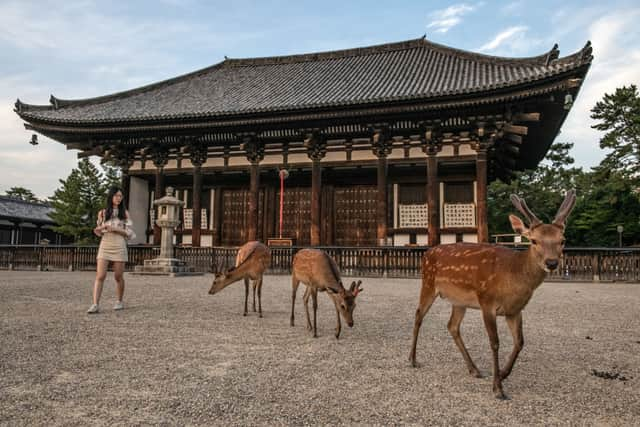Nara Park: Japan's world-famous sacred sika deer in trouble - with crossbreeding putting population at risk
and live on Freeview channel 276
Japan is faced with a pressing predicament, with new research suggesting it needs to either cull “ordinary” deer around Nara's world-famous sanctuaries - or risk losing a sacred genetic legacy.
A new Fukushima University study, published this week in the Journal of Conservation Science and Practice, found numbers of former capital Nara's sacred deer have boomed thanks to a thousand years of protection. But the deer were now suffering from success - and it was creating a conservation dilemma in Japan.
Advertisement
Hide AdAdvertisement
Hide AdAlthough they have been introduced to a number of other countries - including the UK - sika deer originate from East Asia. However, the species has faced localised extinction across much of its native range, with Japan being a notable exception. The Japanese city of Nara is famous for them, and more than 1,200 sika deer can be found wandering its streets and parks, often 'bowing' to visitors in exchange for crackers. Local legend purports the deer are messengers between humans and the gods.


Nara's deer numbers have now grown so much, that they are spreading outside the city, damaging farmland and bringing them into conflict with people. The researchers say the case illustrates the complexities of wildlife management under cultural protection, with locals proving resistant to attempts to cull deer outside of their traditional sanctuaries - even as local authorities designate protected, management, and buffer zones to simplify the issue.
But the scientists discovered another threat the deer boom was posing - the population's unique genetics were now at risk of being lost, as they encountered and interbred with common deer. Associate Professor Shingo Kaneko said his team collected samples from 165 deer across nine sites in Nara and studied their genes. Deer in the protected areas almost all had one set of DNA variations, whereas those from the management areas had multiple different types.
Co-author Dr Toshihito Takagi said the DNA of deer in the protected region "reflects their historical isolation". "In contrast, the management area showcases the establishment of genetically distinct populations, suggesting interbreeding and the potential replacement of the sacred deer by ordinary deer,” he added.
Advertisement
Hide AdAdvertisement
Hide AdThe scientists said the conservation of a population with a millennium-long history was at stake. “Until now, research results from population genetic analysis have rarely been utilized in Japanese wildlife management field. However, with the publication of our genetic research on ‘deer of Nara,’ which is familiar to Japanese people, genetic analysis will likely be widely used to evaluate the origin of animals of unknown origin and the admixture of populations,” Dr Kaneko added.
He hoped the findings of their study would not only inform conservation and management strategies for Nara's sacred deer, but also contribute to a global dialogue on balancing human-wildlife interactions - in the face of rapid environmental changes.
Comment Guidelines
National World encourages reader discussion on our stories. User feedback, insights and back-and-forth exchanges add a rich layer of context to reporting. Please review our Community Guidelines before commenting.
